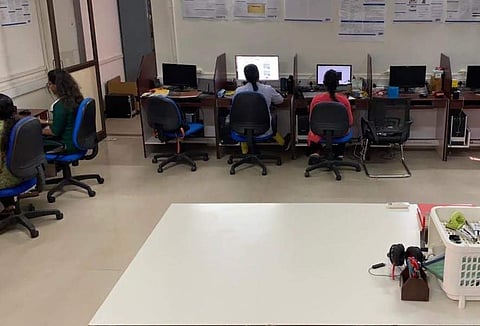

These are words that are commonly heard in the homes of people who have smart devices. And while Alexa, Siri or Google might not always hear them and execute their instructions correctly, it is even more difficult for those with dysarthria. Dysarthria is a type of speech disorder where the muscles used for speech are weakened. This causes slurring and unclear speech. It is with an intention to help these people that a team from SSN College of Engineering — led by Dr P Vijayalakshmi, Professor of Electronics and Communications Engineering — developed a database of dysarthric syllables in Tamil.
Vijayalakshmi and her team — which consists of PhD scholar TA Mariya Celin and Shiv Nadar University Professor T Nagarajan — have been working for three years on this project, which has been done in collaboration with the National Institute for Empowerment of Persons with Multiple Disabilities (NIEPMD). The speech corpus has been developed using technology like Machine Learning. "About 20 dysarthric speakers worked with us on this project. To create a Machine Learning algorithm, there is a need for data labelling and that took a long time. Moreover, availability of the 20 individuals for recording and ensuring that the machine picks it up, also took a long time," states Vijayalakshmi.
With the help of the database, Vijayalakshmi and her team have developed a communication aid. "This can help make communication easier for them. Since their speech is unintelligible, the communication aid can process the speech and speak it out loudly for others to comprehend," she says.
But that's not all. "The speech corpus can also be modified for different types of software. One of the main purposes of the database is that it can serve as rehabilitation research. Besides, it can be used to control various kinds of home appliances. Most dysarthric patients are also wheelchair-bound. This way, they can at least have control over their surroundings with the help of their speech," says Vijayalakshmi. Using Artificial Intelligence and Machine Learning algorithms, a speech recognition system can be built and this database can be fed into that, says Vijayalakshmi.
Besides Tamil, the speech corpus can be recalibrated for 12 other Indian languages, including Malayalam, Telugu, Kannada and Hindi. "The sound units in the database can be mapped for the other Indian languages as well. The sound units have been created in such a way that it can be segregated and used for other Indian languages," says Vijayalakshmi.
